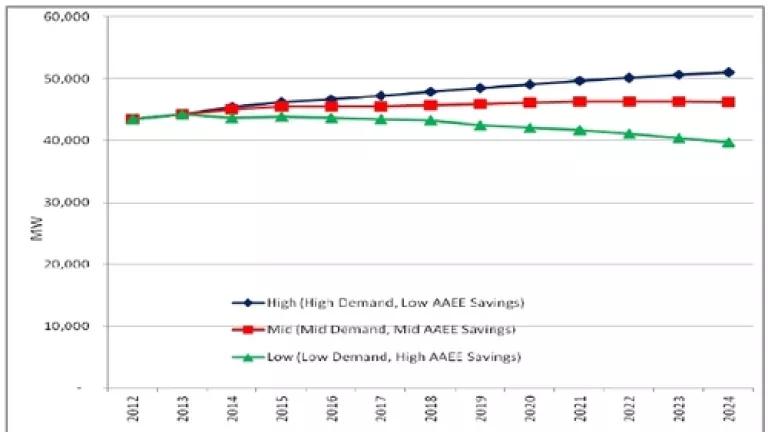California Energy Agencies Adopt Historic Agreement On Energy Efficiency: Saves Customers From Paying For Unnecessary, Polluting Power Plants

California made significant progress this week toward relying on clean energy efficiency to avoid the need for new power plants and grid infrastructure. For the first time, the California Energy Commission (CEC) fully relies on energy efficiency in its forecast of the state’s energy needs over the coming decade, which it developed in concert with the California Public Utilities Commission (CPUC) and California Independent System Operator (ISO).
The CEC’s forecast is used by the CPUC and ISO as the starting point to determine whether the state needs new power plants, transmission lines or other grid infrastructure. In planning to meet those future energy needs, the cleanest, cheapest, and fastest resource is energy efficiency.
Historically, the CEC did not include future energy efficiency plans in its forecast. But its new statewide energy forecast relies on over 5,000 MW of energy savings that are part of the state’s efficiency programs and standards plans, which is the equivalent of 10 large conventional power plants.
The ongoing savings from past energy efficiency programs, building codes, and appliance standards, coupled with the state’s plans for continued energy efficiency progress significantly reduces California’s predicted energy consumption. In the words of the CEC: “the agreed-upon scenario anticipates nearly flat load growth over the next 10 years.” Given that growth in the California economy is expected to increase personal income by more than $800 million over the next ten years and given population growth of 10%, anticipating nearly flat load growth is remarkable. It is a real testament to energy efficiency’s ability to de-linking economic growth from energy consumption.
Agreement Across Agencies Is A Success
The CEC, CPUC and ISO deserve recognition for their coordination and hard work on energy efficiency issues over the past year. A year ago, there were significant disconnects among the agencies on using efficiency to avoid new generation and infrastructure. In a legislative hearing in January 2013, the joint agencies committed to arrive at a single statewide forecast that included a reasonable amount of energy efficiency. This week’s agreement delivers on that promise.
More Work Ahead
The joint agencies agreement to include energy efficiency in the statewide forecast is a major step forward, but there is still room for improvement:
- The estimate of expected energy efficiency savings is conservative. For example, the CEC failed to include future energy efficiency plans from the state’s publicly owned utilities, like the Sacramento Municipal Utilities District and the Los Angeles Department of Water and Power. And the CEC relied on a CPUC study that used a number of conservative assumptions that shrunk the estimate of efficiency savings.
- The joint agencies agreed to continue to refine how they forecast energy efficiency at a local level. Improving local forecasts of energy efficiency is critical to ensure that unnecessary power plants are not built just because of local modeling deficiencies.
At the end of the day, planning for long term energy needs can be complex and obscure—but planning to save customers money and to clean the air through more energy efficiency is clearly the right path forward.
